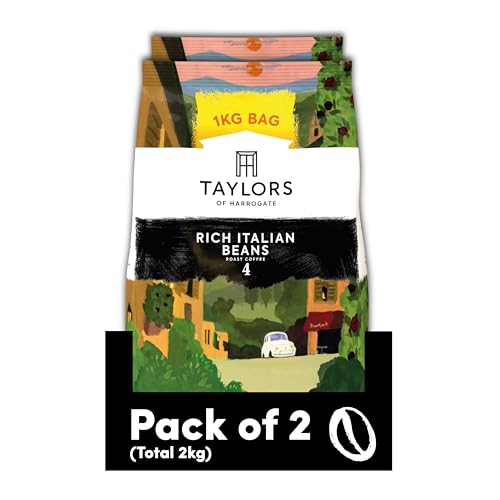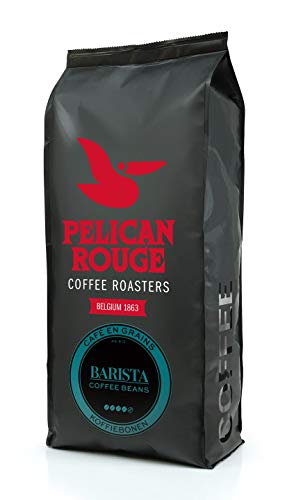The 12 Most Unpleasant Types Of Coffee Beans Types Users You Follow On…
페이지 정보
작성자Freddy 댓글댓글 0건 조회조회 9회 작성일 24-09-17 09:45본문
Coffee Bean Types: Arabica, Robusta, Liberica, and Excelsa
You probably already know that different types produce different flavors. Read on to learn about four of the most well-known varieties: Arabica, Robusta, Liberica, and Excelsa.
 Excelsa beans, a type Liberica which is grown exclusively in Southeast Asia. They have a more fruity, more tart flavor and are often utilized in blends of coffee to add depth.
Excelsa beans, a type Liberica which is grown exclusively in Southeast Asia. They have a more fruity, more tart flavor and are often utilized in blends of coffee to add depth.
Arabica
Arabica is the most sought-after coffee worldwide, making up 75% of the world's coffee beans produced. Arabica beans are milder and sweeter than Robusta and come in different flavors. The aroma and taste of top 10 coffee beans are affected by the conditions under which it is grown and the processing methods employed.
The word "coffee bean shop" originates from the Arabic word meaning the berry. Coffee beans are actually seeds that grow inside bright red berries. It is believed that ancient Ethiopian shepherds noticed that their goats were invigorated by eating berries. The cultivation of coffee grew quickly across the globe.
Coffee beans can grow at high altitudes, and thrive in cold temperatures and plenty of rain. This is one of the reasons for why Arabica is considered to be the best tasting coffee.
Many specialty coffee beans near me shops and roasters are focused on the ethical source of arabica beans, with a focus on fair wages for farmers and sustainable farming practices. These companies often blend arabica beans to create unique specialty coffees that work well with a wide range of brewing methods. Blending is a way to control the aroma, flavor and body, as well as the acidity of coffee. It is often utilized to create an even and consistent taste that appeals to a wider market.
Robusta
Robusta beans are the second most coveted type of coffee bean around the world. They contain more caffeine per bean and are more resistant against diseases and pests. They also contain higher levels of chlorogenic acids, which are naturally-occurring antioxidants. These acids can cause oxidation during the brewing process of coffee and create undesirable flavors.
The plant itself is more robust than arabica, able to thrive in less favorable climate conditions and at lower elevations. It can tolerate higher temperatures and thrives in direct sun. It is faster growing and produces more coffee per plant than arabica, which makes it a more cost-effective crop to cultivate.
Although it might sound odd the fact is that arabica and Robusta beans are often blended together to create coffee blends. If you see names like Uganda or Kenya on the bag of coffee it's possible there is also some robusta.
Most roasters use a mixture of arabica and coffee beans to cut costs and ensure quality. To ensure the integrity of the flavor it is recommended to select the best quality beans from a trusted source. This can be done by purchasing your beans directly from the farmer.
Liberica
Liberica beans are more or less football-shaped and are therefore distinct from other types of coffee beans. They have a unique aroma that is fruity and floral with the smoky notes. They are added to other types of coffee beans to provide them with a more rich and more robust taste.
Liberica coffee beans are found in West Africa, Malaysia (Borneo), and Southeast Asia. They can thrive in low altitudes, and they can tolerate humid, hot climates. They also have a better resistance to disease than Arabica and Robusta.
These characteristics make them ideal for growing at home. It is possible to purchase the seeds on the internet from several sources, but it's best to buy locally-owned producers to ensure the quality of the beans. The best conditions for growing Liberica coffee are fertile deep volcano soils, with moderately acidic and adequate annual rainfall.
Another type of coffee bean is Excelsa, which was once considered a separate species but is now classified as a variation of Liberica. These coffee beans are elongated ovals that are grown on large 20-30 foot coffee plants that are situated at medium altitudes. Their unique taste is both tart and sour, which makes them a popular choice for blends that are house-made. They have a lighter scent and a lower caffeine content than Arabica or Robusta but they still have a distinctive depth of flavor.
Excelsa
Excelsa coffee beans aren't as widely used as Arabica and Robusta, although they're fourth popular. They were actually regarded as distinct species of coffee up until 2006, at which point they were classified as a synonym for Coffea Liberica var. dewevrei. These days, they're mostly grown in Southeast Asia and account for 7% of the world's coffee production. The coffee beans are shaped like teardrops and possess a dark, mysterious taste. These beans are often used to give blends more body and a rich tart taste of ripened fruits.
Arabica beans are the most sought-after, and are renowned for having a a sweeter taste. They thrive in tropical, warm environments and at high altitudes. They have a slight acidity. If they are brewed correctly and roast properly they may have notes like nuts, chocolate or even fruit.
Robusta is the second most sought-after coffee around the world. It is responsible for around 40% of all coffee consumed worldwide. These beans are smaller and more round, but have twice the amount of caffeine as Arabica. They also have more bitterness than the other two varieties, and tend to have earthy and woody overtones.
Now that you've learned the four most popular types of coffee beans and the four most popular types of coffee beans, it's time to select your perfect brew. If you prefer a delicate and smooth flavor pick an arabica or a blend made up of arabica beans and robusta beans.
You probably already know that different types produce different flavors. Read on to learn about four of the most well-known varieties: Arabica, Robusta, Liberica, and Excelsa.
 Excelsa beans, a type Liberica which is grown exclusively in Southeast Asia. They have a more fruity, more tart flavor and are often utilized in blends of coffee to add depth.
Excelsa beans, a type Liberica which is grown exclusively in Southeast Asia. They have a more fruity, more tart flavor and are often utilized in blends of coffee to add depth.Arabica
Arabica is the most sought-after coffee worldwide, making up 75% of the world's coffee beans produced. Arabica beans are milder and sweeter than Robusta and come in different flavors. The aroma and taste of top 10 coffee beans are affected by the conditions under which it is grown and the processing methods employed.
The word "coffee bean shop" originates from the Arabic word meaning the berry. Coffee beans are actually seeds that grow inside bright red berries. It is believed that ancient Ethiopian shepherds noticed that their goats were invigorated by eating berries. The cultivation of coffee grew quickly across the globe.
Coffee beans can grow at high altitudes, and thrive in cold temperatures and plenty of rain. This is one of the reasons for why Arabica is considered to be the best tasting coffee.
Many specialty coffee beans near me shops and roasters are focused on the ethical source of arabica beans, with a focus on fair wages for farmers and sustainable farming practices. These companies often blend arabica beans to create unique specialty coffees that work well with a wide range of brewing methods. Blending is a way to control the aroma, flavor and body, as well as the acidity of coffee. It is often utilized to create an even and consistent taste that appeals to a wider market.
Robusta
Robusta beans are the second most coveted type of coffee bean around the world. They contain more caffeine per bean and are more resistant against diseases and pests. They also contain higher levels of chlorogenic acids, which are naturally-occurring antioxidants. These acids can cause oxidation during the brewing process of coffee and create undesirable flavors.
The plant itself is more robust than arabica, able to thrive in less favorable climate conditions and at lower elevations. It can tolerate higher temperatures and thrives in direct sun. It is faster growing and produces more coffee per plant than arabica, which makes it a more cost-effective crop to cultivate.
Although it might sound odd the fact is that arabica and Robusta beans are often blended together to create coffee blends. If you see names like Uganda or Kenya on the bag of coffee it's possible there is also some robusta.
Most roasters use a mixture of arabica and coffee beans to cut costs and ensure quality. To ensure the integrity of the flavor it is recommended to select the best quality beans from a trusted source. This can be done by purchasing your beans directly from the farmer.
Liberica
Liberica beans are more or less football-shaped and are therefore distinct from other types of coffee beans. They have a unique aroma that is fruity and floral with the smoky notes. They are added to other types of coffee beans to provide them with a more rich and more robust taste.
Liberica coffee beans are found in West Africa, Malaysia (Borneo), and Southeast Asia. They can thrive in low altitudes, and they can tolerate humid, hot climates. They also have a better resistance to disease than Arabica and Robusta.
These characteristics make them ideal for growing at home. It is possible to purchase the seeds on the internet from several sources, but it's best to buy locally-owned producers to ensure the quality of the beans. The best conditions for growing Liberica coffee are fertile deep volcano soils, with moderately acidic and adequate annual rainfall.
Another type of coffee bean is Excelsa, which was once considered a separate species but is now classified as a variation of Liberica. These coffee beans are elongated ovals that are grown on large 20-30 foot coffee plants that are situated at medium altitudes. Their unique taste is both tart and sour, which makes them a popular choice for blends that are house-made. They have a lighter scent and a lower caffeine content than Arabica or Robusta but they still have a distinctive depth of flavor.
Excelsa
Excelsa coffee beans aren't as widely used as Arabica and Robusta, although they're fourth popular. They were actually regarded as distinct species of coffee up until 2006, at which point they were classified as a synonym for Coffea Liberica var. dewevrei. These days, they're mostly grown in Southeast Asia and account for 7% of the world's coffee production. The coffee beans are shaped like teardrops and possess a dark, mysterious taste. These beans are often used to give blends more body and a rich tart taste of ripened fruits.
Arabica beans are the most sought-after, and are renowned for having a a sweeter taste. They thrive in tropical, warm environments and at high altitudes. They have a slight acidity. If they are brewed correctly and roast properly they may have notes like nuts, chocolate or even fruit.
Robusta is the second most sought-after coffee around the world. It is responsible for around 40% of all coffee consumed worldwide. These beans are smaller and more round, but have twice the amount of caffeine as Arabica. They also have more bitterness than the other two varieties, and tend to have earthy and woody overtones.
Now that you've learned the four most popular types of coffee beans and the four most popular types of coffee beans, it's time to select your perfect brew. If you prefer a delicate and smooth flavor pick an arabica or a blend made up of arabica beans and robusta beans.

댓글목록
등록된 댓글이 없습니다.
